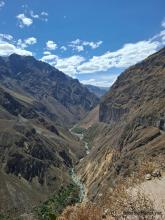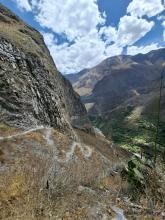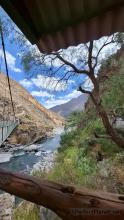We embarked on a new adventure in Peru, visiting the Colca Canyon on a two-day trek.

Condor
The Colca Valley is one of the deepest in the world (4,160 metres deep).
How to visit the Colca Canyon from Arequipa
You can take a one-day tour or a two- or three-day trek.
The one-day tour includes stops at Maca (notable for its white church), the Antahuilque viewpoint, the Wayracpunku viewpoint and the Cruz del Cóndor viewpoint, where you are very likely to see condors, thermal baths, breakfast and lunch. It can cost between $25 and $40.
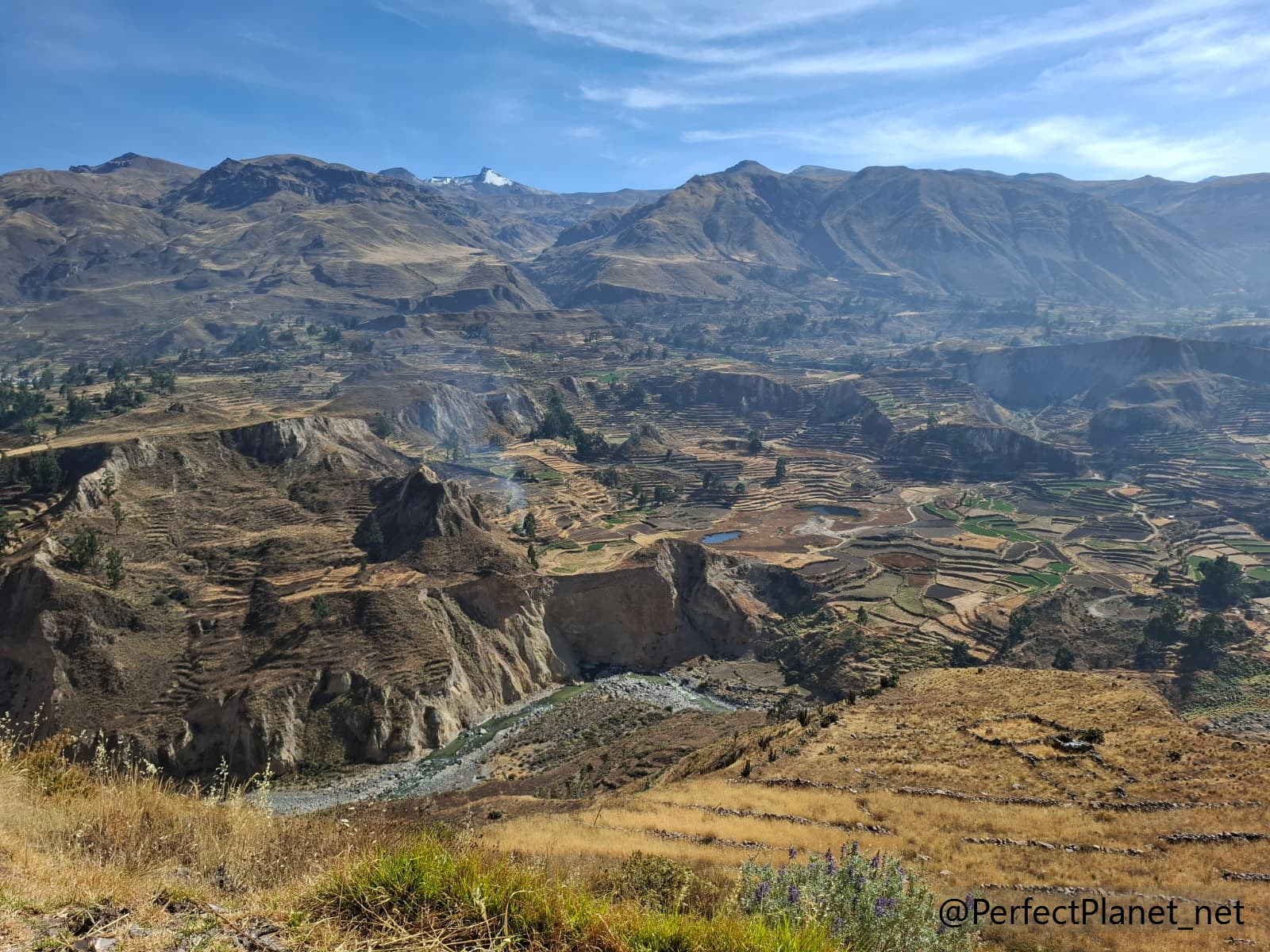
Colca Canyon
If you have enough time, we recommend that you do at least the two-day trek that takes you deep into the canyon. It is true that you need to be fit to enjoy it because on the first day you have to descend 1,200 metres and on the second day you have to climb them in less than 4 kilometres.
The two-day trek in the Colca Canyon includes the first day in Maca, the viewpoints, the descent into the canyon from Cabanaconde, breakfast, lunch, and accommodation and dinner at Oasis Sangalle with a swimming pool. On the second day, you walk back to Cabanaconde, then have breakfast, thermal baths, lunch and stops at the Salinas and Aguada Blanca National Reserve, where there is a camelid reserve and a viewpoint of the volcanoes.
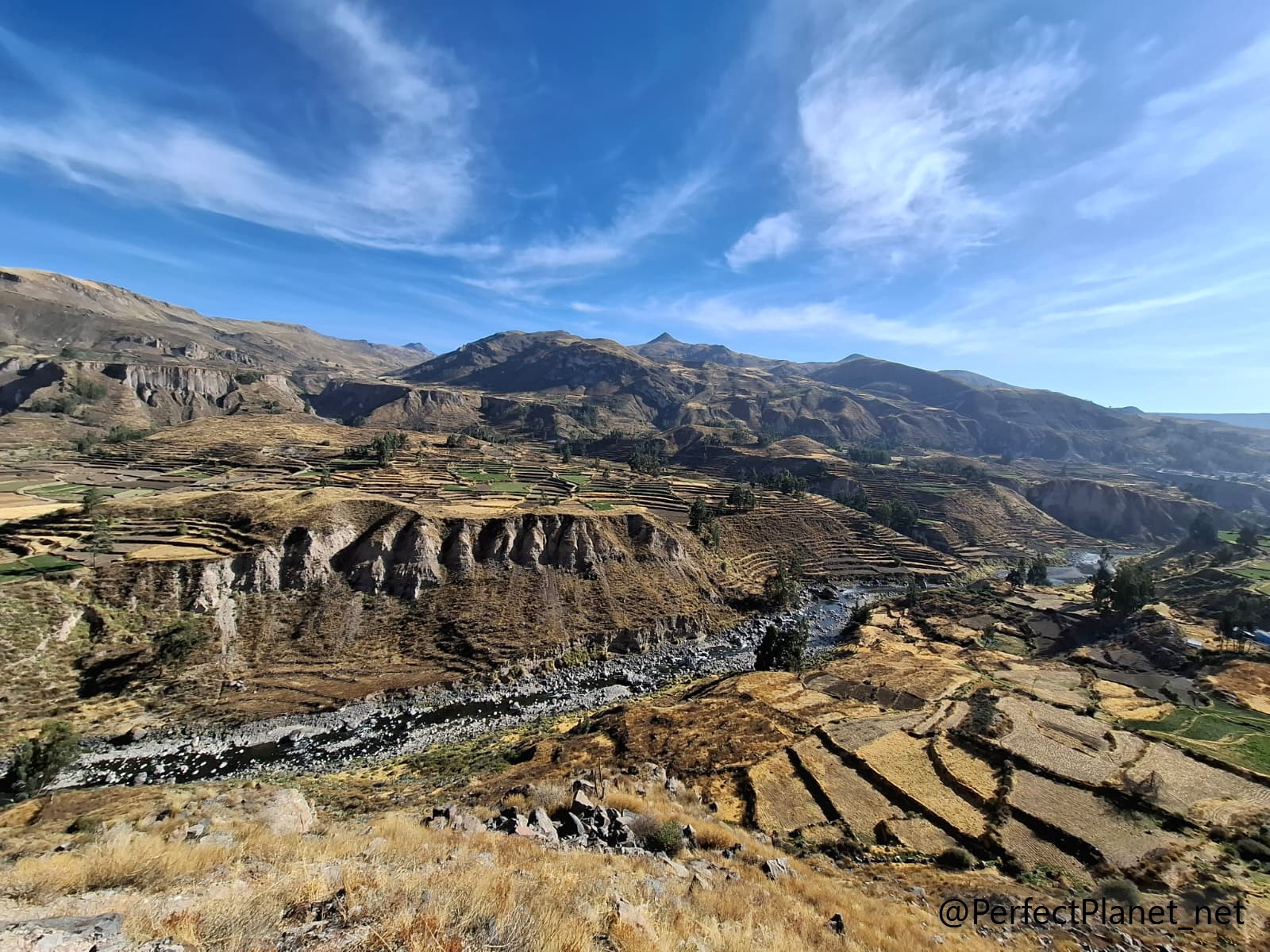
Colca Canyon
We booked it with Casona Moya for 260 soles per person. If you need Gonzalo's contact details, send us a DM on Instagram.
There is always the option of travelling independently by public bus from Arequipa to Chivay, which is much cheaper, and then taking one of the tourist buses to the Cruz del Cóndor viewpoint, but we didn't have any more days and we thought the price we paid was good.
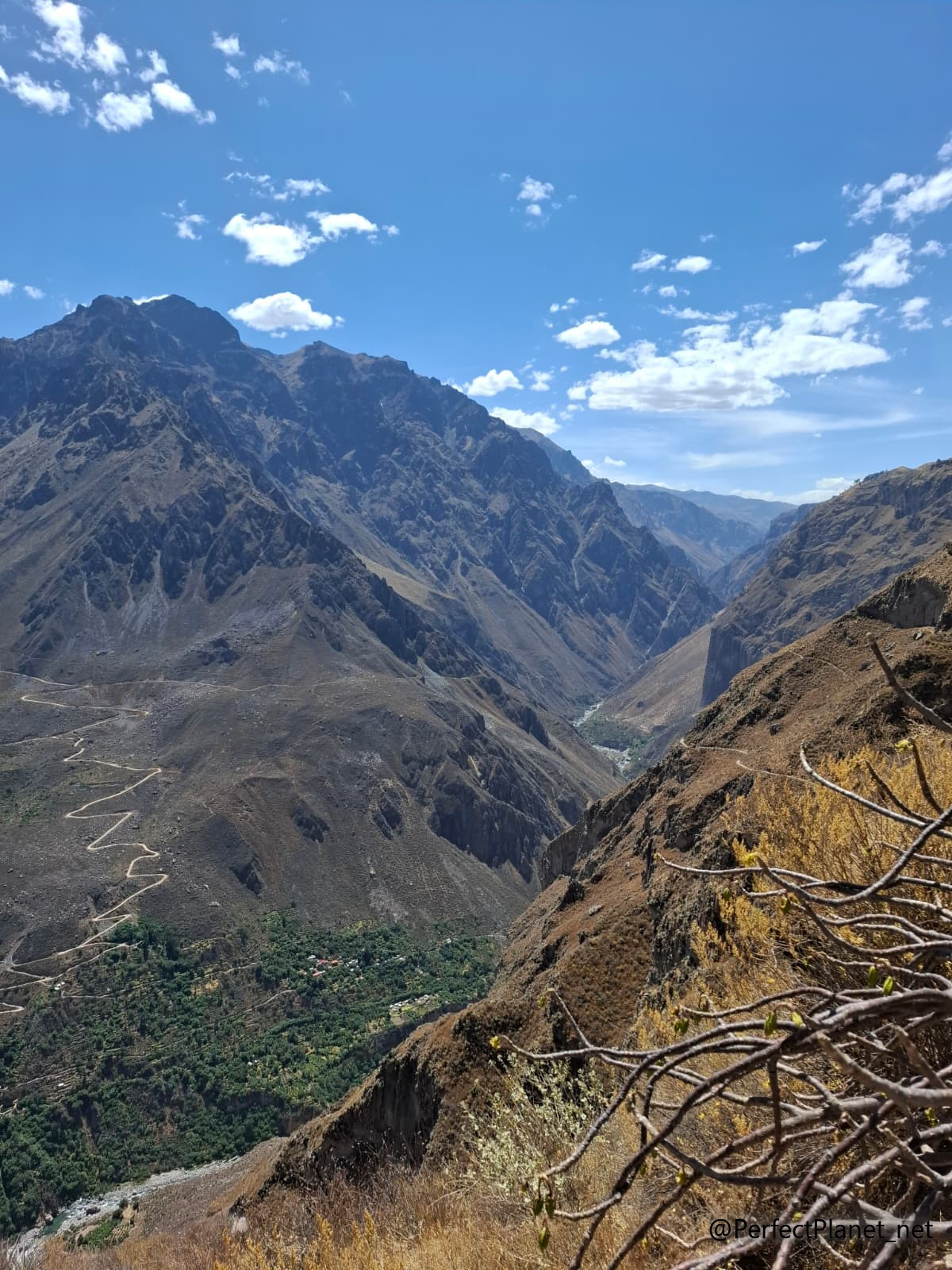
Colca Canyon
At 3.30 am, we are picked up from our accommodation.
We have a three-hour journey by minibus to Chivay, where we stop for breakfast.
Our group is going on a day trip, so when we arrive at the Condor viewpoint, we will join another group to continue the journey.
From Chivay, we still have about an hour to go before reaching our destination. Foreigners must pay a fee of 30 soles per person at the park entrance.
In the village of Maca, the colonial-style Santa Ana Church stands out, particularly its altarpiece. Most of the villages we encounter along the way have Baroque-Mestizo style churches with a very Spanish feel.
The women still wear their colourful traditional clothes. You can tell where they come from by the type of hat and clothing they wear. For example, in the upper Colca region, the hats are white with coloured sequins, in keeping with the Aymara tradition, while in the valley (which has a Quechua tradition), they are dark and embroidered.
We stop for a few minutes at the Antahuilque and Wayracpunku viewpoints to take some photos.
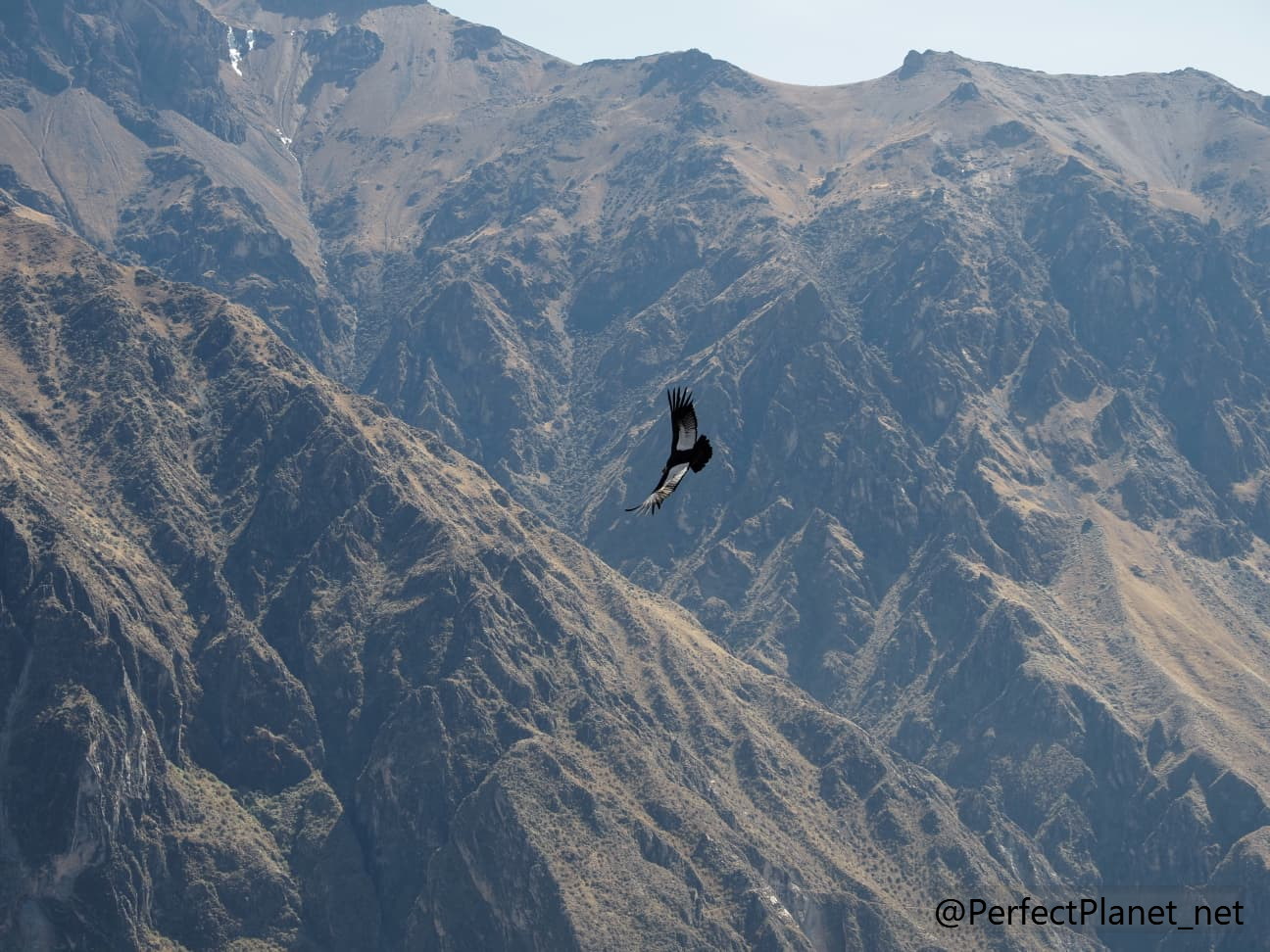
Cóndor
The last viewpoint is the Cross Condor viewpoint. Here we have 20 minutes to observe because the next group is waiting for us to start the walk, the rest have 50 minutes to enjoy the views.
This viewpoint is where you are most likely to see the condor. We believe they nest in the wall below the viewpoint.
We had already seen condors in Huayhuash and a few years ago in Argentina, but never so close. One of the pairs flies over our heads. Amazing!
The condor is one of the largest flying birds on the planet. In the Andes, it is revered and has great spiritual value. It lives in the Andean regions of Peru, Chile, Bolivia, and Argentina. It belongs to the vulture family and feeds on carrion. It can weigh up to 15 kilos and have a wingspan of up to 3 metres. Unfortunately, it is in danger of extinction.
Twenty minutes later, we are taken to Cabanaconde, where another group is waiting for us to start the hike. Distance: 15 kilometres, elevation gain: 1,200 metres.
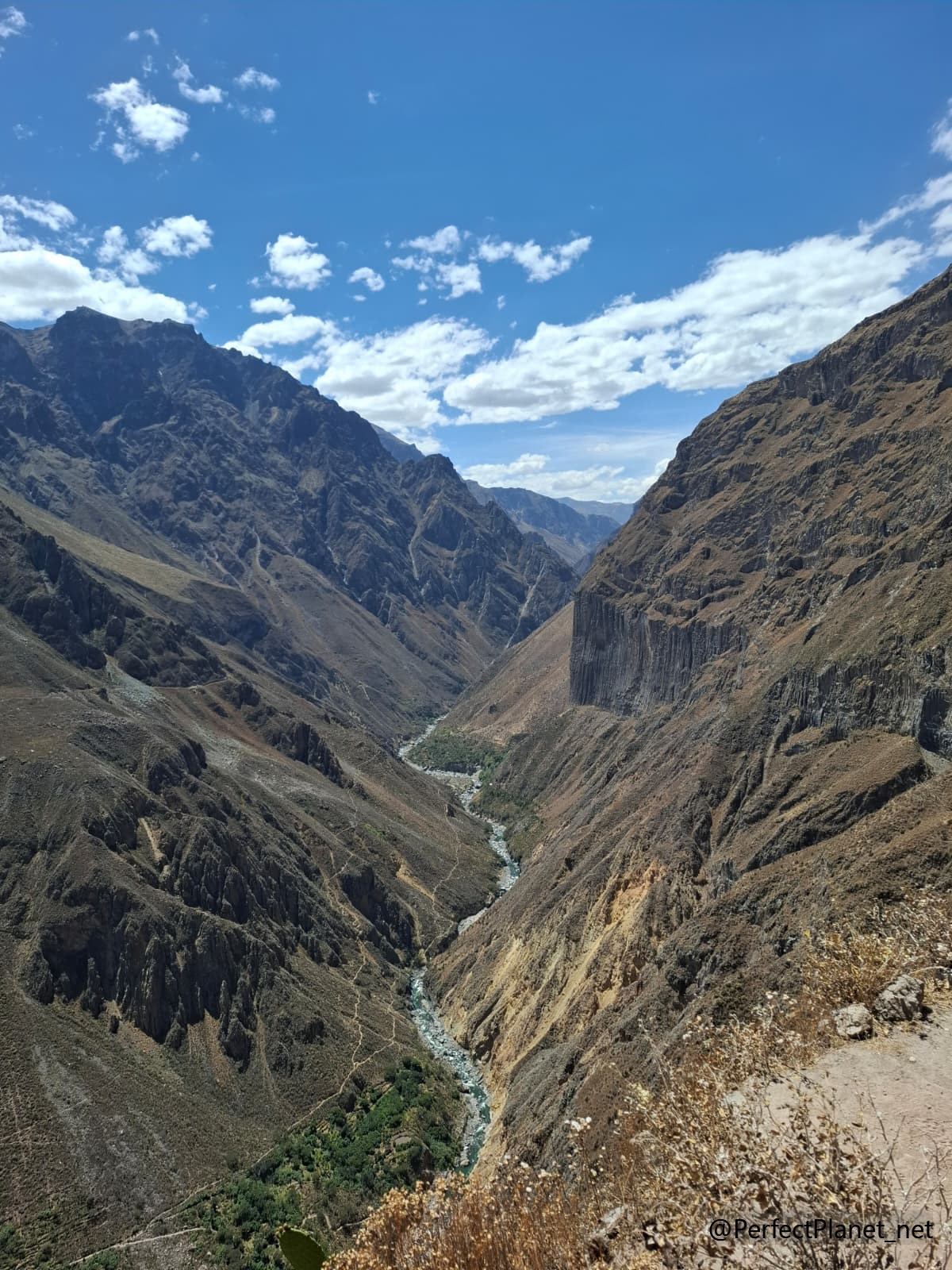
Colca Canyon
Since our walking sticks were stolen in Huamantay, I rent one that turns out to be a bamboo stick for 5 soles.
There are 10 of us plus the guide in the group: two Norwegian women, Alberto from Mexico, Ecaterina from Russia, Julia from Italy, a Bolivian guy, a French couple, and us. Before we start, we have to pay a fee of 70 soles per foreigner to enter the canyon and keep the document that will be stamped along the way.
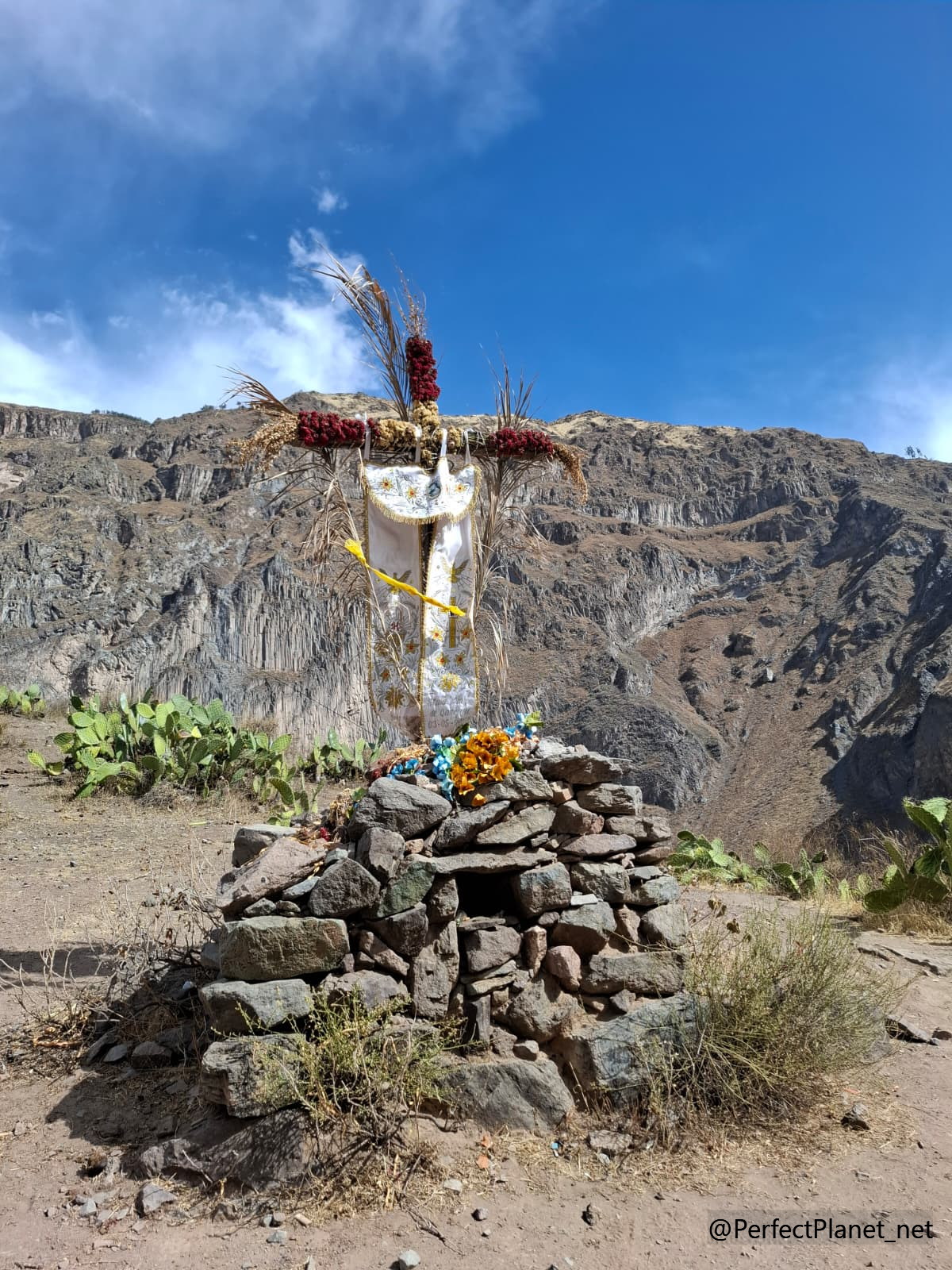
Colca Canyon
The Colca Canyon is impressive, and as you descend, you become more aware of its depth. In about 4 kilometres, we descend 1,200 metres until we reach the river. It is a comfortable, wide and well-marked path, so you can't get lost if you want to do it on your own.
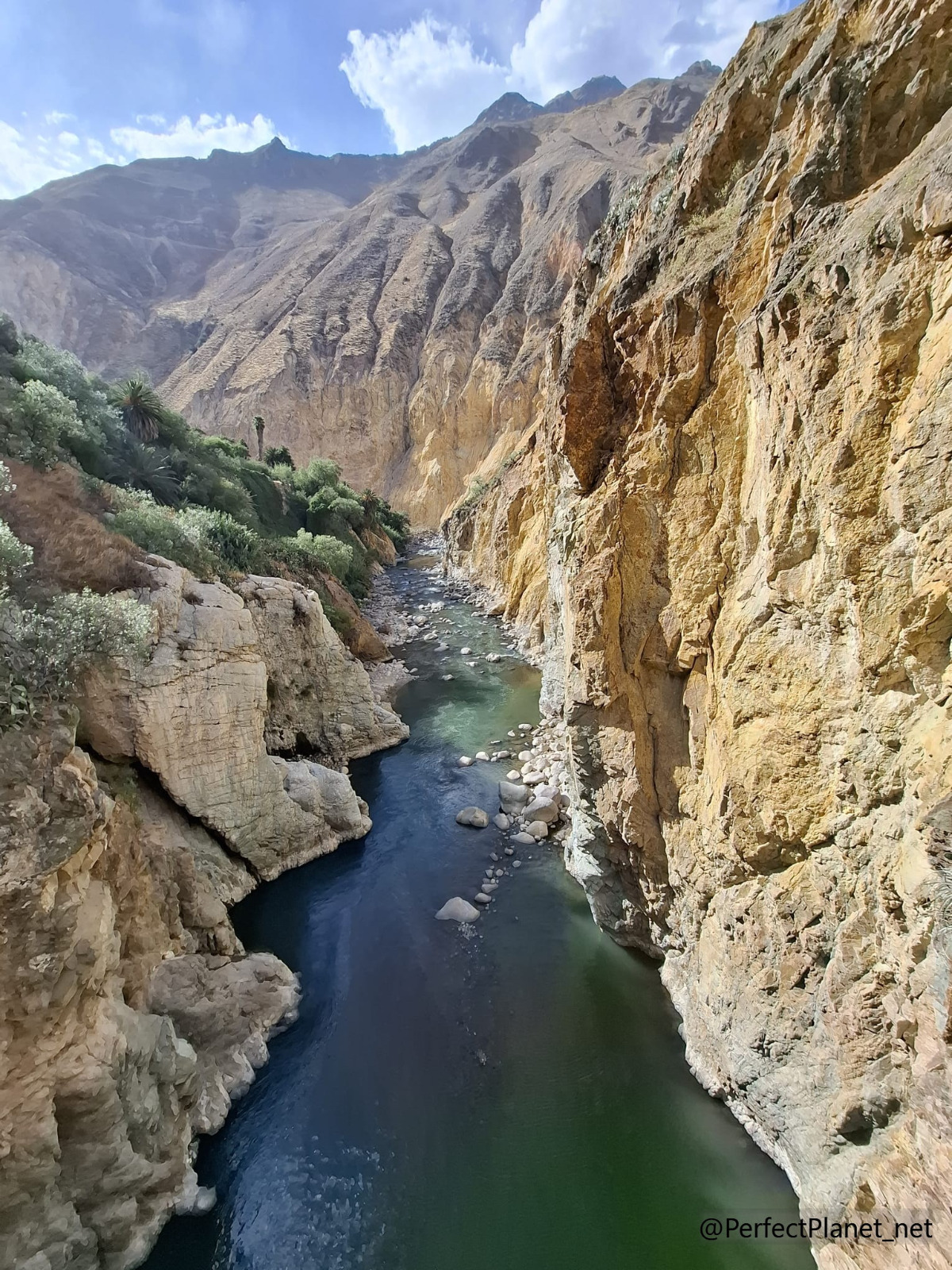
Colca Canyon
We crossed a suspension bridge over the Colca River and walked another 20 minutes to the Gloria Inn in San Juan de Chucho, where we had lunch. This part of the valley is very fertile and surrounded by fruit trees, the greenery contrasting with the arid rocky walls.
Two hours later, we arrived at Oasis Sangalle. About 30 minutes before, there was a stall selling drinks, snacks and fruit much cheaper than at the hostel. We bought water and bananas.
We crossed the river again in one of the most beautiful areas of the canyon and arrived at our accommodation.
We stayed at Paraíso las Palmeras Lodge in a double room with a private bathroom and a swimming pool surrounded by palm trees, which was a great reward after the heat we endured.
We took a dip in the pool and enjoyed the rest of the afternoon chatting with the group.
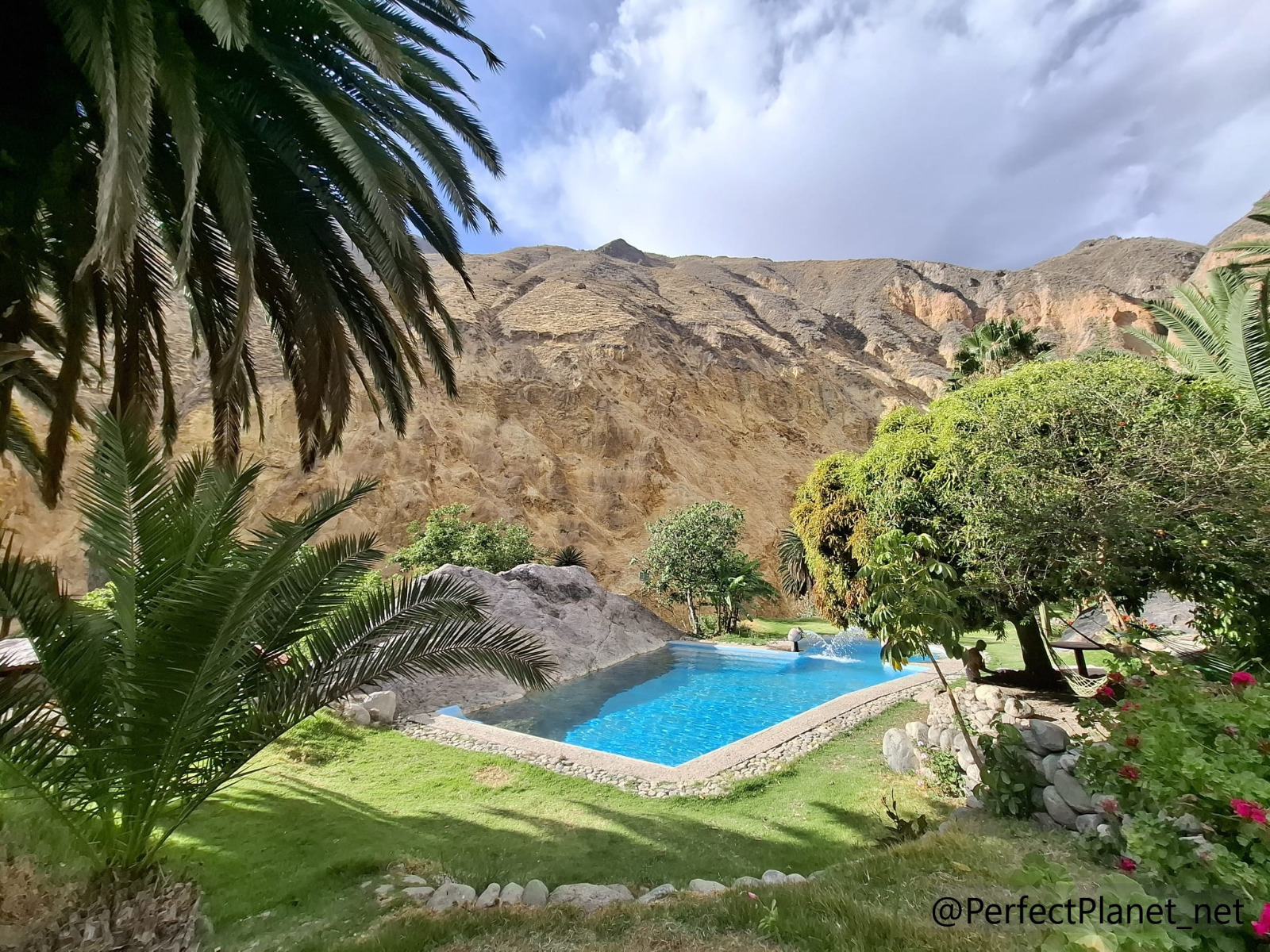
Paraíso Palmeras
We go to bed at nine, and tomorrow we leave before breakfast, at 3.40 am.
Tips. Don't forget to bring a hat, walking sticks, sunscreen, a headlamp and at least a litre and a half of water.

Sunset
2-day trek through Colca Canyon with Casona Moya 260 soles/person
Park entrance fee 30 soles/foreigners
Canyon entrance fee 70 soles/foreigners
Bamboo walking stick rental 5 soles
Water and 2 bananas 16 soles
Accommodation Paraíso las Palmeras Lodge in Oasis Sangalle
- Log in to post comments

